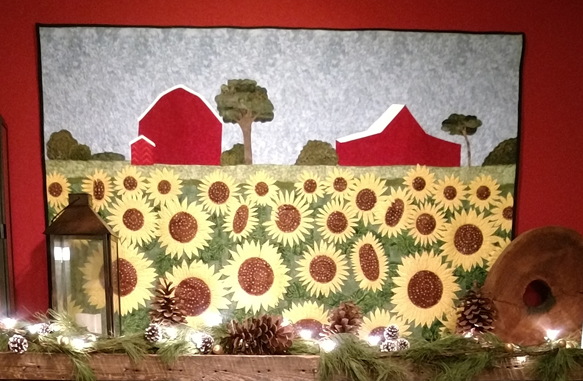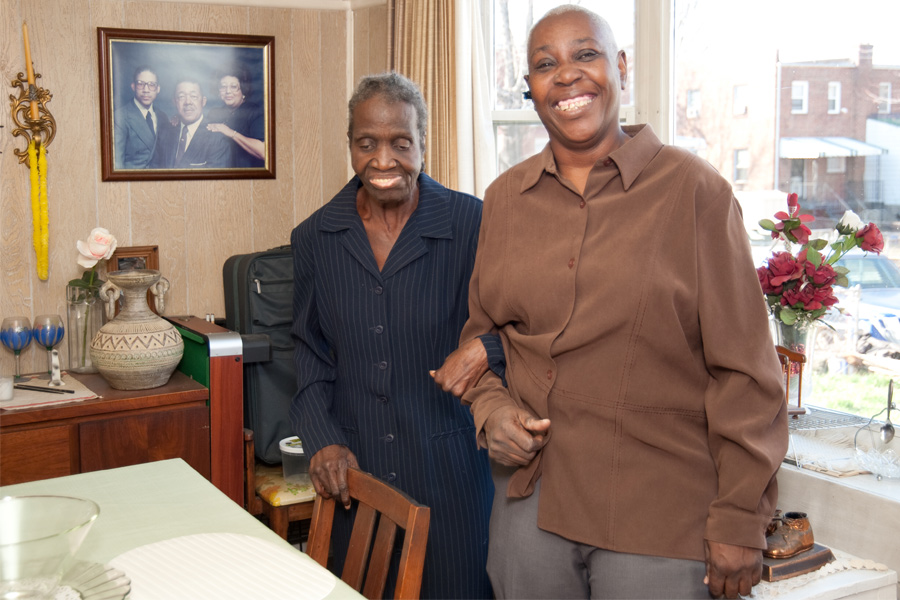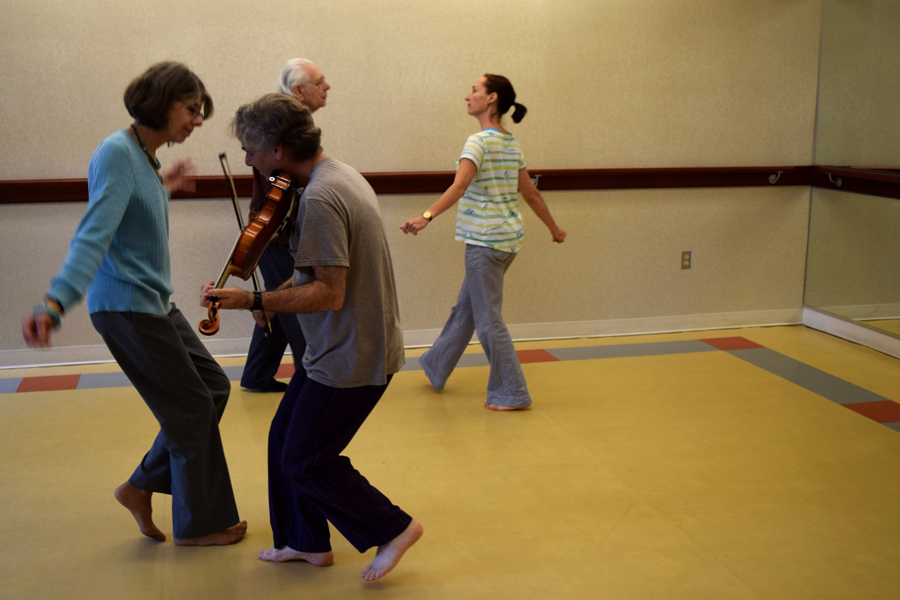Patterned treasures from Kansas: How a quilt box connected me to my grandmother

This article was written in 1995.

I have always treasured the ties to my past, perhaps because I am an only child with a small extended family.
I never knew my Father’s parents. My Grandfather died before I was born and my Grandmother when I was two. My parents took me to Kansas before she died so she could meet me. Unfortunately, I was too young to remember her.
My father tells me many stories about her. The one I like the most is how she remembered seeing her first oil lamp as a child. “Arthur,” she told my father quietly, intensely, “it was the most beautiful thing I had ever seen.” My own grandmother, only two generations back, lived long before electricity was brought to Clay Center, Kansas. It’s still hard for me, in my 36th year in 1995, to believe.
When my Aunt went into a nursing home many years later, long after my grandmother died, a box arrived for me in the mail.
In it were four finished quilts, all crafted by my grandmother years earlier. One was a double wedding ring in soft pastels with a curved border of pink following the rings. The batting was so flattened with use and age that it almost appeared not to have any. The second was a red, white, and blue large star pattern made from beautiful small print fabrics. In contrast to the wedding ring quilt, this one appeared like new with fluffy batting and no signs of wear. A third, made up of flower baskets with a lavender background included such beautiful, bright fabrics I realized then where my father, a lover of azaleas of all colors, got his love of color.
As long as I can remember my father has filled my world with flowers. The woods around the house where I grew up are filled with thousands of azaleas and hundreds of daffodils. We had a contest every spring to see who could spot the first blooming daffodil and each year he planted a pink dogwood for me on my birthday. With the impatience of a child, I could not comprehend how he could put so much effort into taking cuttings from azaleas which would take so many years to become mature plants. Today, walking down an alley of azaleas started from those cuttings and now fifteen feet high, I marvel at their beauty and at his vision.
My father had painted his world with azaleas; his mother painted hers with quilts.
In the bottom of the larger box sent from Kansas was a smaller one. QUILT TOPS it said in red magic marker. In it were ten quilt tops in various stages of completion, some complete tops, several with a few blocks to be attached and one a pile of squares.
Small pieces of newspaper from the Kansas City Star, 1935, proved to be the pattern for a nearly completed quilt top of large bright stars. There were also scraps of fabrics from several of the quilts and a very large pieced green fabric. It looked faded and the green color was uneven. The fabric was thin and soft, almost flimsy to me. Opening it up, I realized that it was intended to be the backing for a quilt. It was pieced together sugar sacks, stamped “Fine Granulated Table and Preserving White Satin Sugar” from the Amalgamated Sugar Company in Ogden, Utah.
I sat with the box for hours, pulling out each top, marveling at the handiwork, and thinking about my grandmother.
I wondered whether the dresses in the Sunbonnet Sue quilt tops (all three of them!) were from her dresses, and were the bolder fabrics in the pinwheel top from my grandfather’s shirts? I knew a lot more about her from that box: I knew that she was patient and skilled and creative; I knew that she had a love of color and could match most any fabric. And most of all, I believe, she had faith that in doing things you liked to do, it would all work out in the end. I was certain then where my father got that from too.
“The world is your oyster,” she used to tell my father. “You can do anything you want to do.” She meant it…and he did it. The only one in his family to go to college, my father was so sure of what he wanted to do that when he got to Washburn College in Topeka, Kansas, he went straight to the Dean of the law school. He knew he wanted to be a lawyer, he said, so couldn’t he just skip college and go straight to law school?
My grandmother herself didn’t have an easy life. She was the oldest girl of fifteen children, born on the Kansas prairie. She raised her own children through droughts and floods, fires and tornadoes, the dust bowl and depression. She lost a young son when a doctor gave him the wrong drops for an earache — a doctor who was then run out of town.
She was terrified of twisters, because of the deaths she had seen them cause. She always made her family move down into the well-stocked cellar to wait out any storm. As a boy, my father claims he was more terrified of the cellar than the storm. Apparently my grandfather’s bottles of home brewed beer had a tendency to explode when there was too much movement in the cellar.
And yet, through it all, she had hope, she had strength. What I marveled at as I looked through the quilt box, remembering my father’s stories, was her obvious need to be creative despite the day-to-day hardships, her appreciation for beauty, and her ability to make beautiful things out of what many others would consider to be discards.
What I wondered about as I looked through the box was why so many unfinished tops, and were there more quilts she made and gave away? I got a partial answer to the first question years later talking to one of my father’s relatives.
“She quilted all the time when she was older and the kids were gone,” she said. “She had all of us saving fabric scraps for her for years.”
When I asked why there were so many tops unfinished, she explained that my grandparents moved into a smaller house and there wasn’t room to set up a frame. She liked piecing the tops, so she just kept working on them.
What I didn’t ask, but have thought about a lot in the ten years since the quilt box arrived, was how she could keep creating these beautiful quilt tops and fold them up and put them away. She must not have expected to finish them herself — she was getting older and wasn’t likely to move to a house any bigger than the one they were in.
None of her children did any quilting. Her one daughter developed a love for embroidery and crochet. Her two grandsons showed no interest and she had no granddaughters before I came along, and I was late in the picture.
So now I ask myself as I begin to work on finishing the seventh quilt, when she was picking out the patterns or patiently piecing a block, did she think a grandchild or great grandchild of hers would someday pick up where she left off? Somehow now, I know she did.
I know she had that kind of hope and faith in the future. She couldn’t know how or when; but it has happened.
That quilt box has changed my life, and given me a grandmother I never knew. And I thank her, with all my heart.
By Sally S. White
Sally joined Iona as an intake specialist in 1986. Since that time, she has worn many hats including deputy director of programs and services, director of Iona’s adult day health center, director of quality management and — since 2009 — executive director. With a strong commitment to advocacy and improving the quality of life for all older residents of the District and beyond, Sally is instrumental in the leadership of the city-wide DC Senior Advisory Coalition, which she co-chairs, and the DC Coalition on Long Term Care.
Related Articles

The Stories of Dementia in the District

A Couple’s Vows Create Opportunities to Age Well

Can You Imagine Taking Three Buses to Get to Iona?

